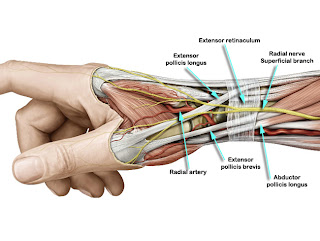IS THIS THE END OF CONFUSING DEBATE ABOUT THE MECHANISM OF WORKING OF PERIPHERAL & SPINAL MANIPULATIVE-MOBILIZATION TECHNIQUES.
THE DEBATE TOPIC: Descending neuro-hormonal mechanism does not produce hypoalgesia in manual therapy induced pain relief. It was earlier claimed that this above said statement is only true for spinal manual therapy procedures NOT for peripheral manual therapy/ mobilization procedures.
THE ANSWAR: Recent research has shown that Mulligan's Mobilization With Movement treatment technique for the elbow (MWM), a peripheral joint mobilization technique, produces a substantial and immediate pain relief in chronic lateral epicondylalgia (48% increase in pain-free grip strength).
This above said hypoalgesic effect with Mulligan’s MWM is far greater than that previously reported with spinal manual therapy treatments, prompting speculation that peripheral manual therapy treatments may differ in mechanism of action to spinal manual therapy techniques.
Naloxone antagonism and tolerance studies, which employ widely accepted tests for the identification of endogenous opioid-mediated pain control mechanisms, have shown that spinal manual therapy-induced hypoalgesia does not involve an opioid mechanism.
One study (a RCT) was to evaluate the effect of naloxone administration on the hypoalgesic effect of MWM. This result demonstrated that the initial hypoalgesic effect of the MWM was not antagonized by naloxone, suggesting a nonopioid mechanism of action. Hence it was concluded that peripheral mobilization treatment technique appears to have a similar effect profile to previously studied spinal manual therapy techniques, suggesting a nonopioid-mediated hypoalgesia following manual therapy.
THE ANSWAR: Recent research has shown that Mulligan's Mobilization With Movement treatment technique for the elbow (MWM), a peripheral joint mobilization technique, produces a substantial and immediate pain relief in chronic lateral epicondylalgia (48% increase in pain-free grip strength).
This above said hypoalgesic effect with Mulligan’s MWM is far greater than that previously reported with spinal manual therapy treatments, prompting speculation that peripheral manual therapy treatments may differ in mechanism of action to spinal manual therapy techniques.
Naloxone antagonism and tolerance studies, which employ widely accepted tests for the identification of endogenous opioid-mediated pain control mechanisms, have shown that spinal manual therapy-induced hypoalgesia does not involve an opioid mechanism.
One study (a RCT) was to evaluate the effect of naloxone administration on the hypoalgesic effect of MWM. This result demonstrated that the initial hypoalgesic effect of the MWM was not antagonized by naloxone, suggesting a nonopioid mechanism of action. Hence it was concluded that peripheral mobilization treatment technique appears to have a similar effect profile to previously studied spinal manual therapy techniques, suggesting a nonopioid-mediated hypoalgesia following manual therapy.


Comments
Post a Comment